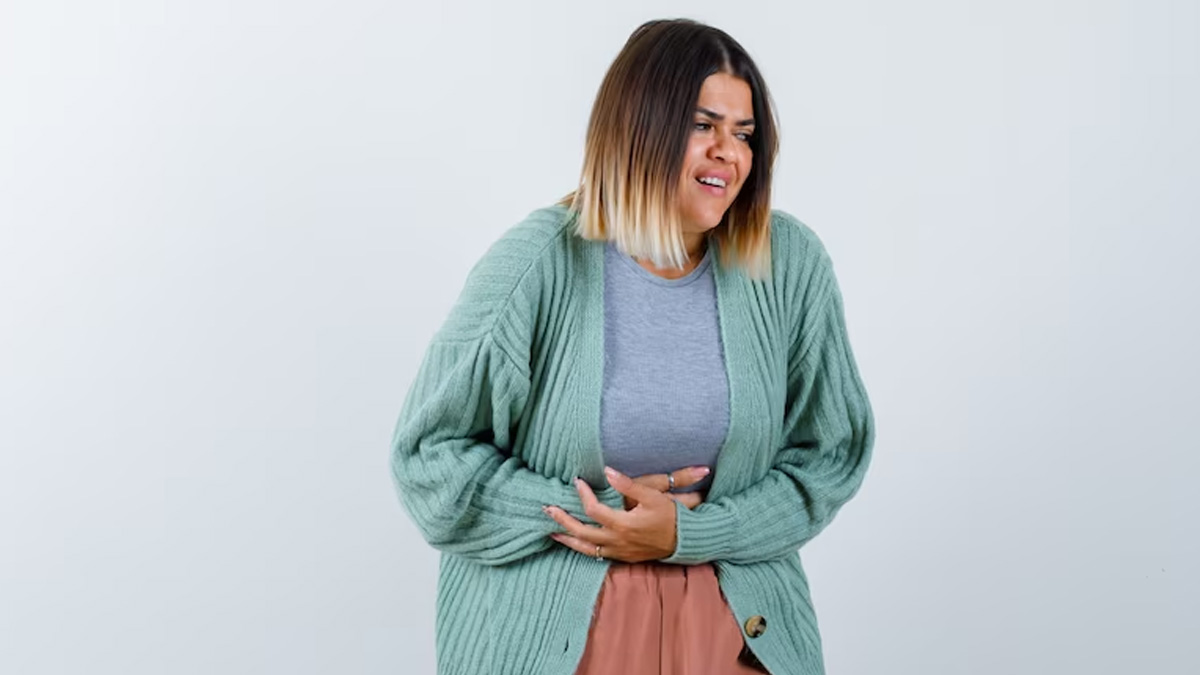
Lower abdominal pain is a common complaint among women, and it can arise from various underlying causes. Identifying the source of discomfort is crucial for accurate diagnosis and effective treatment.
Table of Content:-
Lower abdominal pain can affect any of the organs located between your belly button and pubic bone. This comprises the abdominal and pelvic organs. When it comes to pain, it can be difficult to discern the difference.
Menstrual Cramps
For many women, lower abdominal pain is a monthly occurrence associated with menstruation. Dysmenorrhea, or menstrual cramps, occurs due to the contractions of the uterus during menstruation. According to Dr Ekta Bajaj, Head and Senior Consultant, Obstetrics and Gynaecology, Ujala Cygnus Group of Hospitals, the pain can range from mild to severe and may be accompanied by other symptoms such as backache, nausea, and fatigue. Over-the-counter pain relievers, heating pads, and lifestyle modifications often provide relief for most women.
Pelvic Inflammatory Disease
As per Mayo Clinic, pelvic inflammatory disease refers to the infection and inflammation of the female reproductive organs, including the uterus, fallopian tubes, and ovaries.
Also read: Delayed menstruation cycle? Stress Could Be The Reason
Commonly caused by sexually transmitted infections such as chlamydia and gonorrhoea, PID can lead to lower abdominal pain, along with other symptoms like fever, abnormal vaginal discharge, and painful intercourse. Timely treatment with antibiotics is essential to prevent further complications, such as infertility.
Urinary Tract Infection
A journal published in the US, The National Institutes of Health says UTIs are more prevalent in women than men due to anatomical differences. When bacteria enter the urethra and ascend to the bladder, they can cause an infection, resulting in lower abdominal pain, frequent urination, a burning sensation during urination, and cloudy urine. Antibiotics are typically prescribed to treat UTIs and alleviate the associated discomfort.

Ovarian Cysts
Ovarian cysts are fluid-filled sacs that develop on or within the ovaries. While many ovarian cysts are harmless and resolve on their own, some can cause lower abdominal pain if they become large, rupture, or twist, leading to ovarian torsion. Women may also experience irregular menstrual cycles, bloating, and pain during intercourse. Treatment depends on the size and type of cyst, ranging from watchful waiting to surgical removal.

Endometriosis
Endometriosis is a condition in which the tissue that lines the uterus grows outside of it, commonly affecting the ovaries, fallopian tubes, and pelvic cavity. This abnormal growth can cause severe lower abdominal pain, particularly during menstruation, along with heavy menstrual bleeding, pain during intercourse, and infertility.
Fibroids
Uterine fibroids are non-cancerous growths that develop in the muscular wall of the uterus. While they are typically benign, fibroids can cause lower abdominal pain, heavy menstrual bleeding, frequent urination, and pressure on surrounding organs.
Treatment options range from medication to surgical interventions, depending on the size, location, and symptoms associated with the fibroids.
Also read: Menstruation and Period Blood is Normal…Period
Lower abdominal pain in women can stem from a wide range of causes, both benign and potentially serious. It is crucial to consult a healthcare professional for a proper diagnosis and tailored treatment plan.
Understanding the underlying causes can empower women to take charge of their health and seek appropriate medical intervention when needed. Remember, timely medical attention is essential to ensure optimal well-being and quality of life.
Also watch this video
How we keep this article up to date:
We work with experts and keep a close eye on the latest in health and wellness. Whenever there is a new research or helpful information, we update our articles with accurate and useful advice.
Current Version
